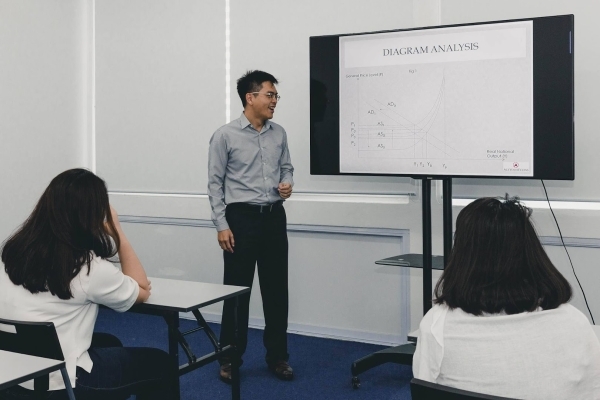Mastering JC Economics requires more than just understanding basic concepts. Advanced techniques in economics tuition for JC students delve into sophisticated strategies that enhance comprehension and performance. Whether through econs tuition or JC economics tuition, employing these step-by-step strategies can significantly elevate your grasp of economic principles.
Embracing Analytical Frameworks
Understanding JC Economics begins with grasping analytical frameworks that form the backbone of economic analysis. Concepts such as demand-supply analysis, cost-benefit analysis, and market structures provide a structured approach to dissecting economic issues. In economics tuition, emphasis is placed on applying these frameworks to real-world scenarios, enabling students to analyse economic data critically and derive informed conclusions.
Analytical frameworks not only help students understand economic phenomena but also equip them with the tools to assess the impact of economic decisions and policies. By employing demand-supply analysis, for example, students can evaluate how changes in price and quantity affect market equilibrium. This foundational understanding is crucial for making predictions about market behaviour and assessing the effectiveness of economic interventions.
Applying Economic Models
In JC economics tuition, students learn to apply economic models to predict outcomes and evaluate policies. Models like the circular flow of income, aggregate demand-aggregate supply (AD-AS), and production possibility frontier (PPF) are pivotal in understanding macroeconomic and microeconomic dynamics. Advanced techniques involve not only understanding these models but also using them to formulate hypotheses and make reasoned economic forecasts.
The circular flow model, for instance, illustrates the flow of goods, services, and money between households and firms. By analysing this model, students can grasp how changes in consumption, investment, government spending, and net exports influence national income and employment levels. Similarly, the AD-AS model helps students understand how changes in aggregate demand and aggregate supply affect price levels and output in the economy, providing insights into inflationary and recessionary pressures.
Interpretation of Economic Data

A crucial aspect of JC economics tuition is the interpretation of economic data. Students learn statistical techniques to analyse economic indicators such as GDP growth rates, inflation rates, and unemployment rates. Econometrics, a methodological tool in economics, enables students to apply statistical models to economic data, providing empirical evidence to support economic theories and policy recommendations.
Interpreting economic data requires students to not only understand statistical concepts but also apply them to real-world economic phenomena. For example, analysing unemployment rates involves identifying structural, frictional, and cyclical factors affecting labour markets. Econometric models help quantify these relationships, allowing students to draw meaningful conclusions about the effectiveness of labour market policies and the overall health of the economy.
Critical Evaluation of Policies
JC economics tuitionemphasises the critical evaluation of economic policies and their impact on society. Students learn to assess the effectiveness of fiscal policies (government spending and taxation) and monetary policies (interest rates and money supply) in achieving economic objectives such as price stability, economic growth, and income distribution. Advanced techniques involve weighing the pros and cons of policy alternatives and predicting their long-term implications.
Evaluating economic policies requires a comprehensive understanding of economic theory and empirical evidence. Fiscal policies aimed at stimulating economic growth, for instance, must consider their impact on budget deficits and public debt levels. Similarly, monetary policies designed to control inflation must weigh the trade-offs between price stability and economic output. By critically evaluating these policies, students develop a nuanced understanding of economic decision-making and its implications for society.
Application of Game Theory
In advanced economics tuition for JC students, game theory emerges as a powerful tool to analyse strategic decision-making in competitive markets. Concepts like Nash equilibrium and prisoner’s dilemma are applied to study the behaviour of firms, consumers, and governments. Game theory enhances students’ ability to anticipate market outcomes, understand competitive strategies, and formulate optimal decision-making strategies in economics.
Conclusion
Advanced techniques in JC Economics, learned through dedicated econs tuition or JC economics tuition, empower students to navigate complex economic landscapes with confidence. By embracing analytical frameworks, applying economic models, interpreting economic data, critically evaluating policies, and leveraging game theory, students can develop a robust understanding of economics and excel in their academic pursuits.
Contact Excel Economics today for more information.






